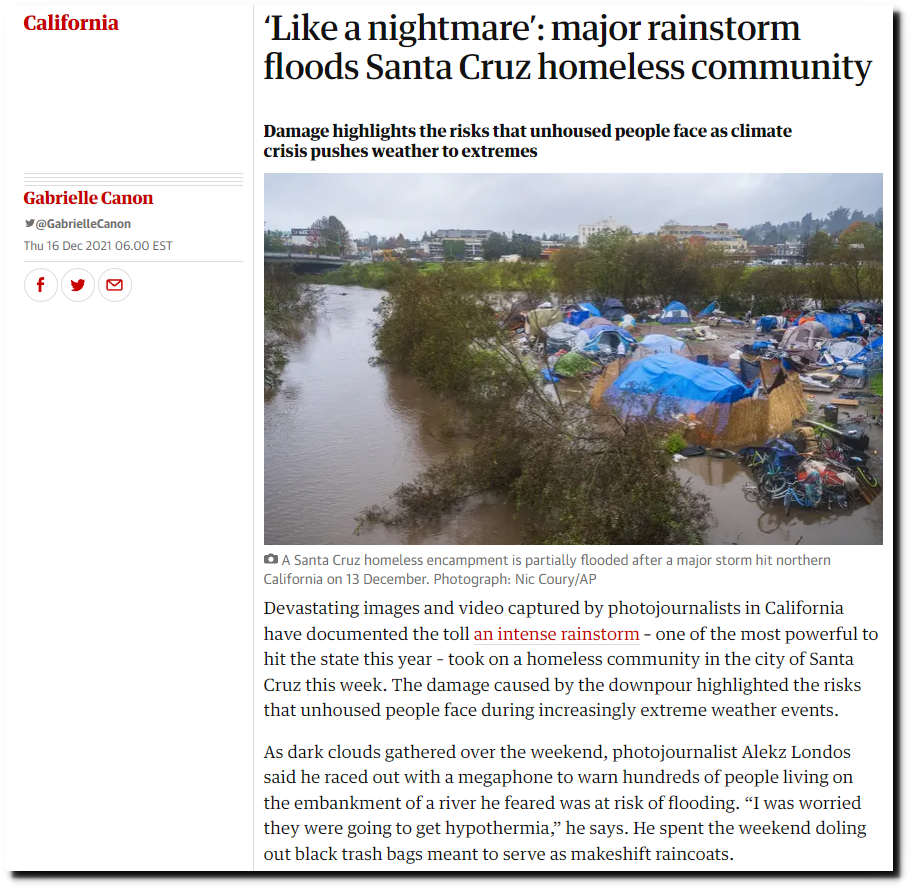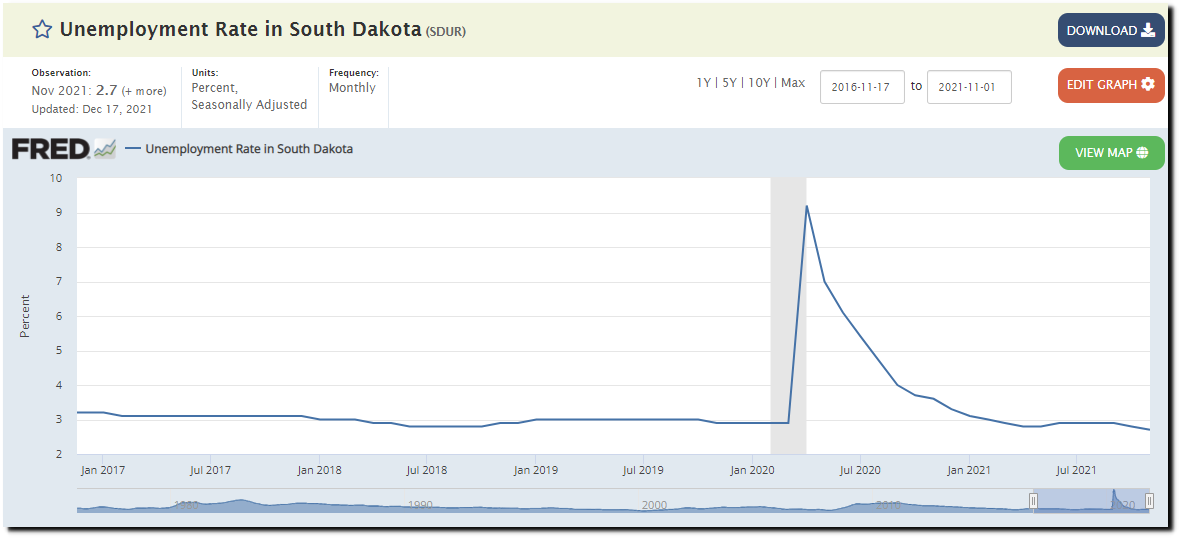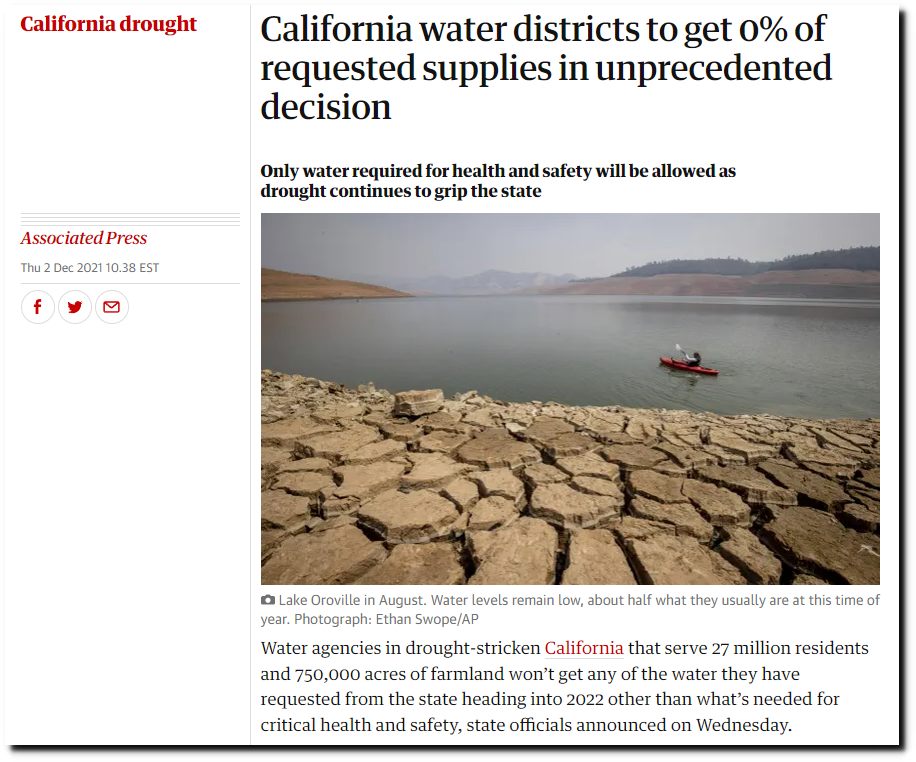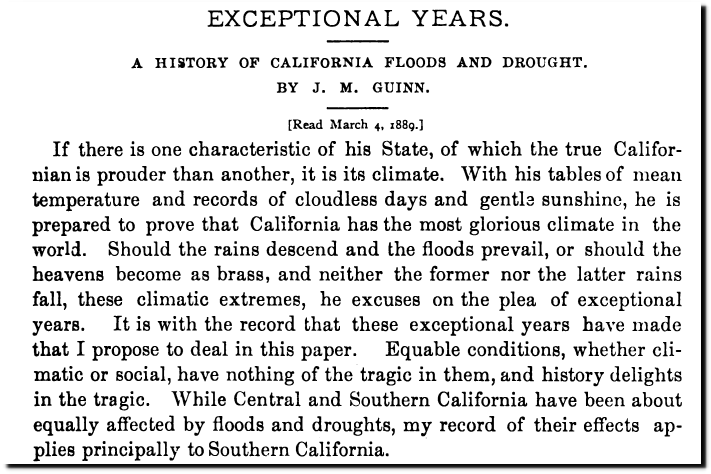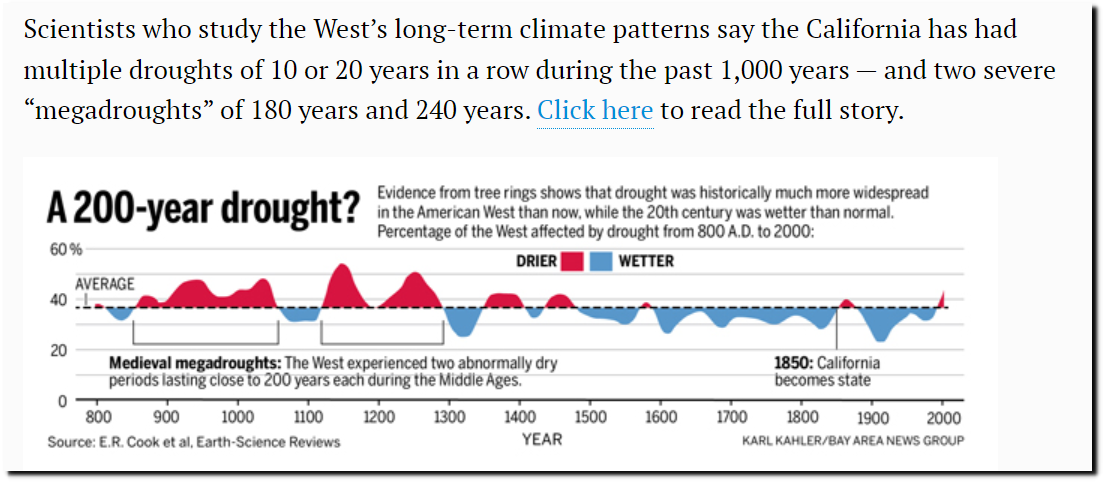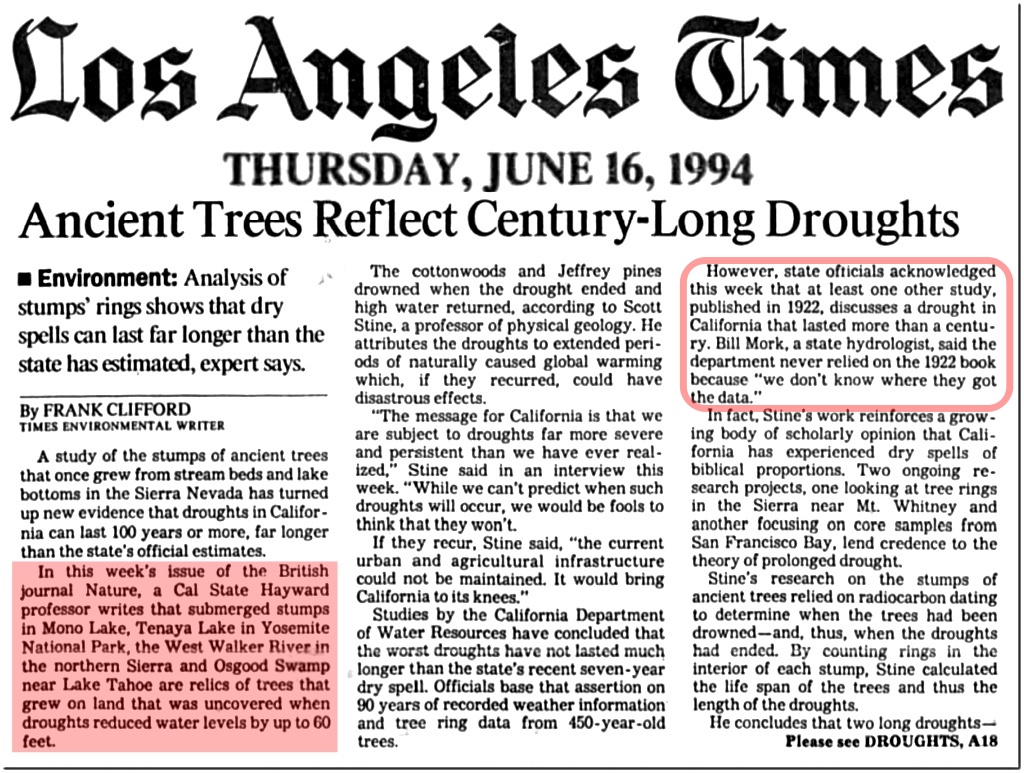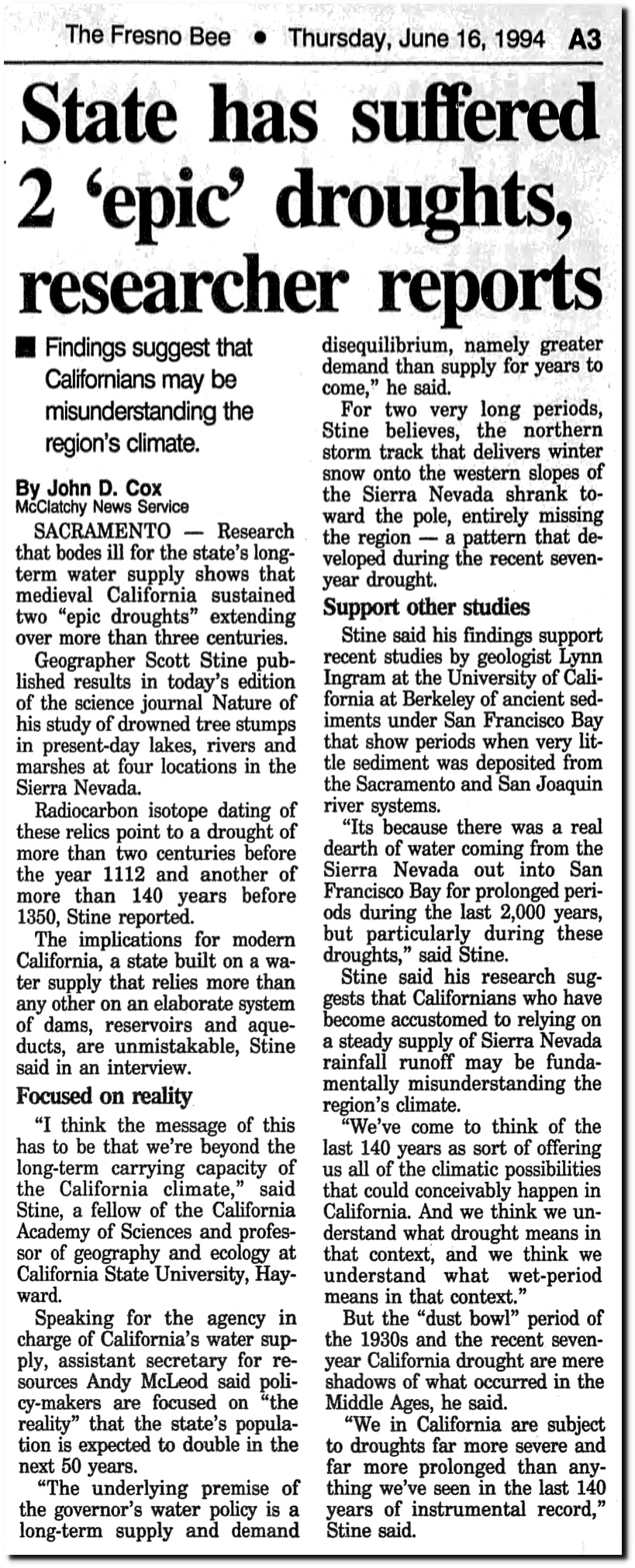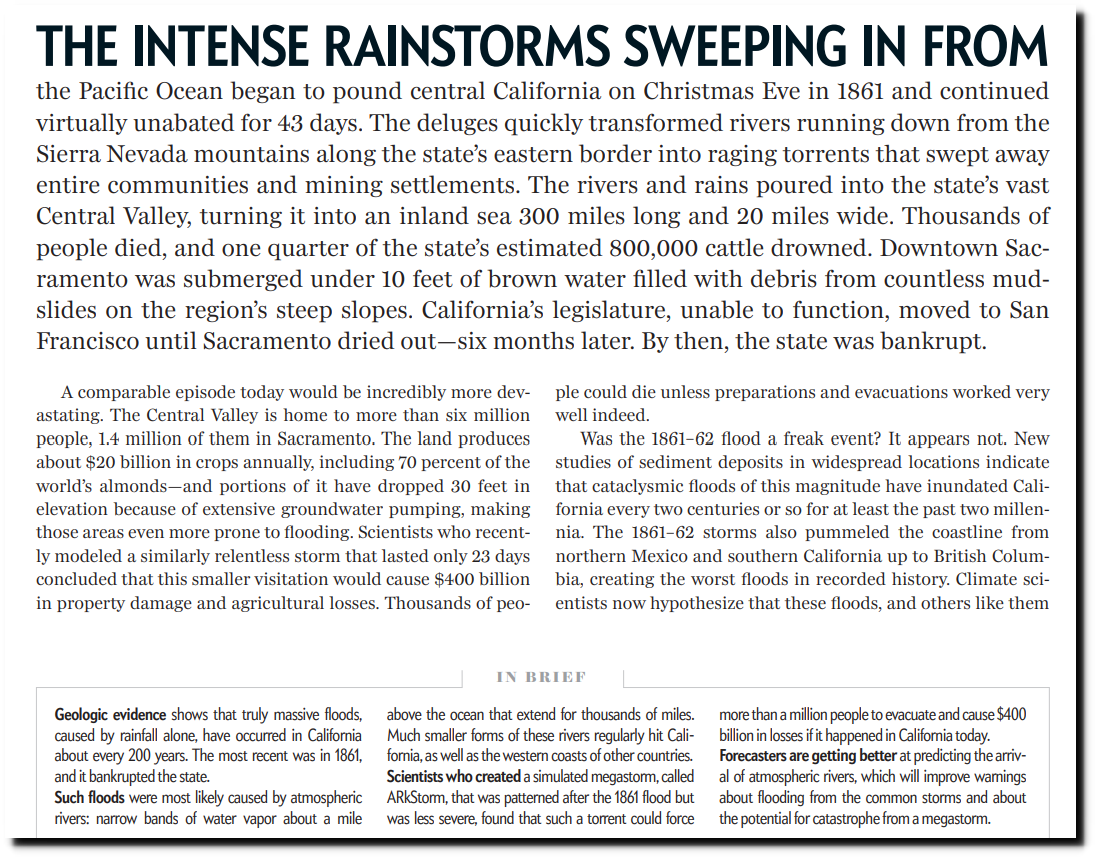California’s government forced huge numbers of people out of work last year, and now they are homeless and flooded. The Guardian says it is due to climate change.
‘Like a nightmare’: major rainstorm floods Santa Cruz homeless community | California | The Guardian
Coronavirus unemployment: Tracking California’s fallout – Los Angeles Times
Unemployment Rate in California (CAUR) | FRED | St. Louis Fed
South Dakota didn’t force people out of work and had no long term consequences to the fraud being pushed by virus modelers and government officials. They have the lowest unemployment rate in the country.
Unemployment Rate in South Dakota (SDUR) | FRED | St. Louis Fed
Two weeks ago The Guardian was pimping the California drought.
Alternating droughts and floods has always been the climate of California. What has changed is they now have a government which is working hard to destroy the state.
“The earliest record of a flood that I have been able to find is a brief mention of one that occurred in 1811. In 1815 occurred a great flood that materially changed the course of the Los Angeles River within the city limit
In 1822 occurred a flood, when the waters covered the low- lands entirely and rose to a greater height than ever before known. The intervening years between 1822 and 1825 were in all probability years of abundant rainfall
In 1825 the rivers of this county were so swollen that their beds, their banks and the adjoining lands were greatly changed
The flood of 1825 changed the course of the Santa Ana River also. Previous to that year the Santa Ana entered the ocean several miles to the northwest of its present channel. These floods were followed, in 1827-28-29, by a terrible drought
The flood of 1832 so changed the drainage in the neighborhood of Compton and the northeastern portion of the San Pedro ranch that a number of lakes and ponds, covering a large area of the latter ranch, lying north and northwesterly from Wilmington, which to that date had been permanent, became dry in a few years thereafter
In 1842 occurred another flood, similar to that of 1832. This was followed by the drought of 1844-45-46, with its usual accompaniment of starving cattle and horses
The flood of 1851 and 1852 brought disaster to many a mining camp, and financial ruin to many an honest miner. A warm rain melted the deep snows on the Sierras, and every mountain creek became a river and every river a lake. ” Each gorge and gulch was transformed into a tumultuous water-course that descended the hillsides, tearing down giant trees, and scattering its drift and debris along the plain
The year 1856 might be said to be an exception, even to exceptional years. A severe drought, intense summer heat, earthquake shocks, thunder and lightning, and severe sand storms, made a variety of climate, that, if not pleasing, was varied enough. It was considered the driest and most unhealthful season the country had known for twenty years. During the summer of that year and the ensuing winter the loss of cattle in the county of Los Angeles alone by starvation was estimated at one hundred thousand.
The year 1859 was another exceptional year. In October the thermometer registered 110° in the shade, and in December occurred the most remarkable precipitation of rain ever known in the county. It was estimated that one foot of water fell within twenty-four hours
The great flood of 1861-62 was the Noachain deluge of California floods. During the months of December, 1861, and January. 1862, according to a record kept at San Francisco, 35 inches of rain fell, and the fall for the season footed up nearly 50 inches
After the deluge, what ? The drought. It began in the fall of 1862, and lasted to the winter of 1864-65. The rainfall for the season of 1862-63 did not exceed four inches, and that of 1863-64 was even less. In the fall of 1863 a few showers fell, but not enough to start the grass. No more fell until March. The cattle were dying of starvation. Herds of gaunt, skeleton-like forms, moved slowly over the plains in search of food.
The great drought of 1863-64 put an end to cattle raising as the distinctive industry of Southern California. The flood of 1867-68 left a lasting impress on the physical contour of the county by the creation of a new river, or rather a new channel for an old river, the San Gabriel
The floods of 1884 and 1886 caused considerable damage to the lower portions of the city. The flood of 1884 swept away about fifty houses, and carried away portions of several orange orchards and vineyards. One life was lost, that of a milkman, who attempted to cross the Arroyo Seco. The flood of 1886 was very similar to that of 1884 ; the same portion of the city was flooded – that between Alameda Street and the river. Several houses were washed away, and two lives lost. During the flood of 1884 the Santa Ana River cut a new channel to the sea.
In looking over the record of floods we find, as a rather remarkable coincidence, that for a period of fifty years, a flood has occurred every tenth year. Beginning with the season of 1811 and 1812 we find floods occurred in 1822-32-42-52 and 62. To establish a theory of decadal floods there should have been one in 1872 and in 1882, but both these were dry years – floods occurring in 1873-74 and 1883-1884?
EXCEPTIONAL YEARS: A HISTORY OF CALIFORNIA FLOODS AND DROUGHT
Megadroughts and megafloods are the normal climate of California.
Graphic: California’s droughts in the past 1,200 years – The Mercury News

